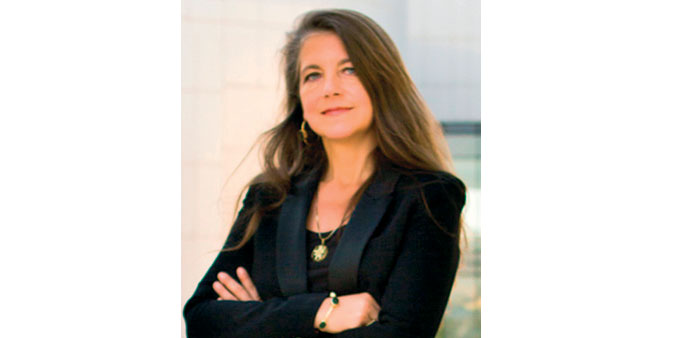By Salman Siddiqui/Staff Reporter
If there is one person in Doha who epitomises the saying that architecture is frozen music, it is Dr Anna Grichting.
Dr Grichting, a Swiss national, is an architect, urbanist, university professor and musician. She also holds a Doctor of Design from Harvard University. Currently, she is associated with Qatar University’s department of architecture and urban planning as an assistant professor.
What’s really interesting about Dr Grichting is that while she is busy teaching design to her students during the day, she turns into a jazz singer in the night.
Asked how she managed to be a professor and a rock star at the same time in an interview with Gulf Times, she laughed: “Well, I’m not quite a rock star, but thank you.”
Dr Grichting said she believed that architecture and music were quite closely linked. “I always thought that I should choose between architecture and music. But I never really could make the choice. Architecture and music are linked. There is a saying that architecture is frozen music. If you see architecture, the structure and scales, the proportions, then you get to know that they are quite a lot of similarities,” she explained.
In Qatar, Dr Grichting has recently launched Desert Bridges, an NGO registered in Geneva that aims to bring musicians from all over the world to Qatar.
“The idea of this NGO and musical group is to bring together musicians from different parts of the world. The aim is to create bridges through music and create new kinds of music,” she said.
Already, around a dozen musicians from around the world are in town to perform from the platform of Desert Bridges.
She hoped that Desert Bridges would mature into a platform of learning for not only Qatari musicians to learn from other artistes, but also a unique experience for world artistes to learn about Arab musicians and their different instruments.
Speaking like an architect about music, she said: “What’s nice about the idea of a bridge is that we are meeting across the bridge and are also learning from each other. For a bridge to be solid, it has to be built from both sides and should have a good structure.”
Born in Switzerland and brought up in England and Ireland, Dr Grichting’s first musical encounters were with Celtic music. “I started singing when I was living in Ireland. I went to school there and lived there till I was 17. The Irish like to sing a lot and that’s where I started singing. When I studied architecture, I started taking lessons in classical music,” she recalled.
Back in Switzerland, she was involved in classical music training and workshops for jazz and blues singing. From her English pop and Irish Celtic influences, she turned to rhythm and blues with her group, Mad Hatters, who played across venues from 1985 to 1990.
Later, she formed a jazz group called Songs Trio, with pianist Michel Bastet and trombonist Jean-Jacques Pedretti, and played with pianist and composer Ariane Besson.
In recent years, she has revived her interest in folk music, especially Indian, Pakistani and Celtic music, besides exploring the world of improvised jazz and new technologies. “In fact, we also went on to make a CD with Pakistani Qawwali musicians,” she revealed.
With Pedretti, she founded the Sufi Moon project, an encounter between alphorns (alpine horns) and Qawwali music based on the theme of the moon. With Sufi Moon, she toured Pakistan and performed during the Urs of Sufi saint Baba Farid at his shrine in Pak Pattan and also released a CD with musicians Sher Miandad Khan, Warisali Baloo Khan and Robert Morgenthaler.
Desert Bridges will perform a short piece today at a welcome reception to celebrate the opening of the Swiss embassy. Tomorrow, it will perform a concert at the Qatar National Theatre, which will be open to the public for free.

Grichting ... bridging the gap
